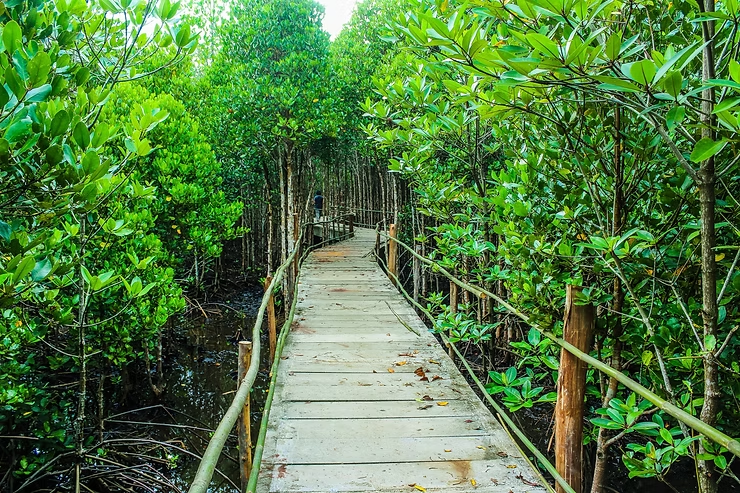Conserving Critical Coastal and Marine Habitats
Supporting the conservation of mangroves, seagrasses, and coral reefs is essential for the health of coastal and marine ecosystems. These habitats are crucial for ecological balance, supporting countless species, and sustaining human communities.
Mangroves
Mangrove forests thrive along tropical and subtropical coastlines, forming natural buffers that protect shorelines from erosion and storm surges. Their intricate root systems provide nurseries for juvenile fish and habitats for birds. Additionally, mangroves act as carbon sinks, sequestering vast amounts of carbon dioxide and mitigating climate change. Conserving mangroves requires protecting them from deforestation, pollution, and urban development.
Seagrasses
Seagrasses are underwater plants that form meadows along coastlines, providing shelter and foraging grounds for species such as seahorses and sea turtles. They improve water quality by filtering pollutants, stabilizing sediments, and contributing oxygen through photosynthesis. Seagrasses also help combat ocean acidification. Conservation efforts focus on protecting existing meadows and restoring degraded habitats threatened by development, pollution, and climate change.
Coral Reefs
Coral reefs, often called the rainforests of the sea, support high biodiversity and serve as food, shelter, and breeding grounds for numerous marine species. Reefs also sustain fisheries and tourism, benefiting local economies. Threats include rising sea temperatures, ocean acidification, overfishing, and pollution. Conservation strategies include establishing marine protected areas, practicing sustainable fishing, and reducing greenhouse gas emissions to mitigate these risks.
Integrated Conservation
These ecosystems are interconnected. Mangroves often border coral reefs, providing nurseries for fish that later populate reefs. Seagrasses help maintain water quality, reducing sediment and nutrient runoff that benefits coral health. Protecting one habitat can therefore have positive ripple effects on others.
Community Engagement
Local communities are essential to successful conservation. Coastal residents often rely on these ecosystems for livelihoods, and involving them in sustainable resource management and ecotourism fosters stewardship and shared responsibility for protection efforts.
Scientific Research
Ongoing scientific research enhances understanding of these habitats, their species, and threats. Research informs effective conservation strategies and helps monitor ecosystem health and the success of protection measures.
Climate Change Mitigation
Reducing greenhouse gas emissions is critical for the long-term survival of mangroves, seagrasses, and coral reefs. Slowing ocean warming and acidification helps protect these habitats and the species that depend on them.
Conclusion
Conserving mangroves, seagrasses, and coral reefs is a collective responsibility vital for marine biodiversity, human livelihoods, and climate resilience. Protecting and restoring these ecosystems safeguards food security, mitigates climate change, and ensures healthy oceans for future generations.

